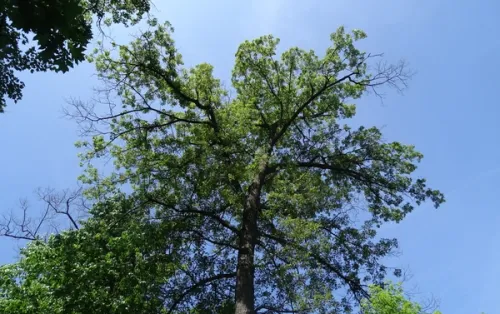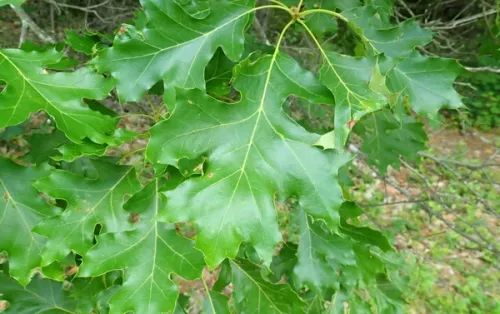Back to Glossary
Eastern Black Oak
Quercus velutina
A fantastic keystone species, Eastern Black Oak is a durable and imposing tree that can reach heights of 50 to 60 feet. It is recognized for its deeply furrowed, nearly black bark and large, bristle-tipped leaves that provide dense shade. These leaves transition from a deep green to a striking red or orange in autumn, creating dramatic seasonal landscapes. In spring, it bears yellowish-green catkins that mature into acorns, which are essential food sources for birds and mammals. Eastern black oak is adaptable to a variety of soil types but prefers dry, sandy, or rocky soils. It is commonly found in mixed hardwood forests and is valued for its tough wood and ecological contributions.
Details
Height600” - 720”
Spread658"
Bloom SeasonApril – May
Soil Types
Loam
Sand
Soil Moisture
Dry
Medium
Sun Exposure
Full Sun
Range Map
Available
Not available
Ecological Benefits
Maintenance Tips
- Drought-resistant once established; minimal watering needed unless in extremely dry conditions.
- Prune during dormant seasons to remove dead or diseased wood and to maintain health and structure.
- Prefers well-drained acidic soils; tolerates poor soils well.
- Mulch around the base to conserve moisture and provide nutrients.
- Keep an eye out for pests like the oak leaf caterpillar and diseases such as oak wilt, treating as necessary to preserve the tree’s health.







